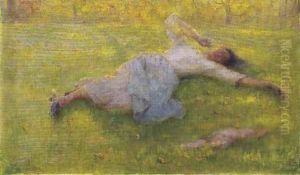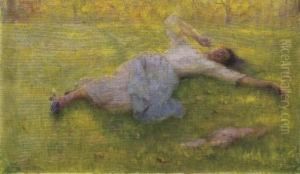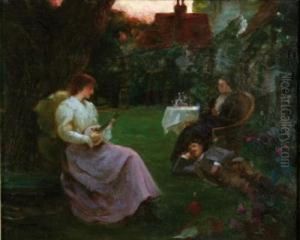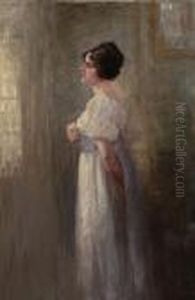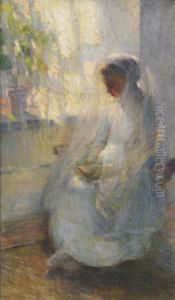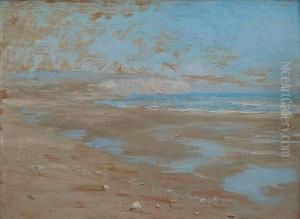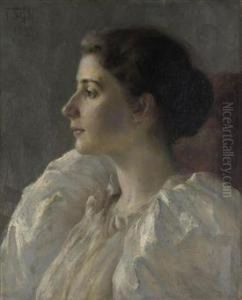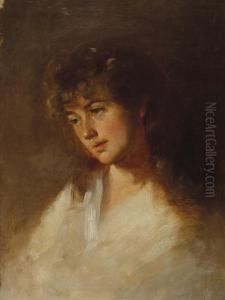Tudor St George Trucker Paintings
Tudor St George Tucker was an Australian artist known for his contributions to the Heidelberg School, an Australian art movement of the late 19th century that is often associated with Australian impressionism. Tucker was born in London, England, in 1875, into a family with colonial ties to Australia. His father was a judge in the colony of Victoria, and Tucker would eventually move to Australia to pursue his artistic career.
Tucker studied at the National Gallery of Victoria Art School in Melbourne and later honed his skills in Paris at the Académie Julian. His time in Europe exposed him to the works of the French Impressionists and the Barbizon school, influences that would shape his later work. After returning to Australia, Tucker became affiliated with artists like Arthur Streeton and Tom Roberts, who were central figures in the Heidelberg School. This group of artists sought to capture the unique light and landscape of Australia, often working en plein air, or outdoors.
Tudor St George Tucker's works are characterized by their delicate use of light and sensitive representations of the Australian bush. He often focused on pastoral subjects and the effects of sunlight through trees, capturing the tranquillity of the Australian countryside. His palette was typically more subdued than that of some of his contemporaries, reflecting a personal interpretation of the local environment.
While Tucker's contribution to Australian art was significant, he was not as prolific as some of his peers, and his work was often overshadowed by the more dominant personalities in the Heidelberg School. Despite this, his paintings are considered important in the canon of Australian art history for their unique qualities and Tucker’s individual style that added depth to the movement.
Tucker's later years were marked by a decline in his health, which affected his productivity. He returned to England and spent his final years there, passing away in 1938. Although he spent a considerable amount of time away from Australia, his art remains a testament to his love and appreciation for the Australian landscape and has continued to be celebrated in Australian art history.
